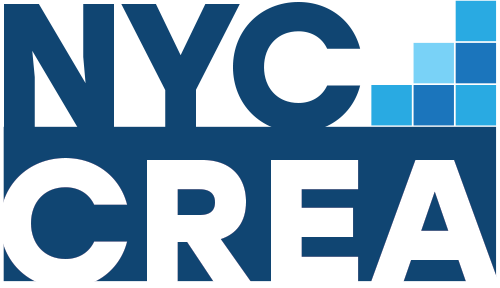Articles
We’ve been in New York commercial real estate long enough to see zoning shifts come and go, but nothing compares to the City of Yes plan. Air rights used to be a rare, niche play—one of those transactions we’d maybe see once every few years. Now? Everything has changed.
A proposed rent freeze in New York City could gut investor returns, making many office-to-residential conversions financially unworkable. Office conversions offer a quicker path to creating new housing as a rent freeze provides long-term affordability for tenants.
The New York City FC's new stadium in Willets Point, Queens will cover 23 acres (9.3 hectares) and combine world-class sports infrastructure with 2,500 affordable homes, a 250-room hotel, a 650-seat public school, and over 40,000 square feet of public space. The new neighborhood is designed to thrive year-round, with retail shops, restaurants, and community plazas that ensure Willets Point becomes a vibrant hub even on non-game days.
At the core of Mamdani’s agenda is his most controversial promise: a citywide rent freeze on nearly one million rent-stabilized apartments. These units house more than 2 million residents and form the largest share of the city’s affordable housing supply. Supporters see it as a lifeline for overburdened tenants; critics view it as a financial time bomb for building owners already squeezed by rising costs.
The long-anticipated rollout of New York’s downstate casino licenses is entering its final stretch, with bids intensifying and public scrutiny rising. The state is finally poised to grant up to three licenses in the New York City region by December 2025. With 8 billion-dollar proposals duking it out, what are the developments that we should know?
John F. Kennedy International Airport is in the midst of a monumental transformation—the largest in its history. With a price tag of $19 billion, the multi-phase redevelopment project aims to modernize terminals, streamline transportation, and elevate the travel experience. But perhaps the most compelling story is not just what’s happening at JFK—but what this means for commercial real estate in the surrounding area.
In a landmark move for affordable housing in New York City, real estate investment firm Tredway has acquired Ocean Park Apartments in Far Rockaway, Queens for $88 million, as reported by CRE Daily. This 602-unit community, originally built in 1973, now stands as a symbol of long-term housing stability thanks to a comprehensive affordability plan. The acquisition represents a significant moment for Queens real estate and underscores the growing trend of mission-driven investment in aging multifamily properties.
The numbers are striking. Leasing activity hit nearly 724,000 square feet this quarter, a 22.6% jump from Q4 2024. Brooklyn and Queens dominated, locking down nearly 84% of this volume. This isn’t just noise—it’s a signal.
We've been poring over the data, and I'm thrilled to share an unstoppable move now in New York City real estate: Office-to-residential conversions. About 10 million square feet of prime spaces are targeted as spots for desperately needed residential units. Imagine: up to 10,000 new units in the city! What are the top Manhattan submarkets with this conversion potential?
E-commerce activity saw a significant boost from Q4 2024 to Q1 2025, with its share of users climbing from 3% to 15%. However, other sectors experienced a decline: manufacturers' share dropped to 16% from 21%, and retail/wholesale's share plummeted from 28% to 4% quarter-over-quarter. How is NYC coping with the industrial headwinds?
The opening of Belmont Park Village signals a major pivot in how commercial real estate is positioned and valued in suburban metro markets. Traditionally overlooked in favor of urban high streets or regional malls, the Elmont community now boasts a high-concept retail village designed to rival international destinations. Here are some retail features that set Belmont apart.
June 27 marks a critical milestone—the deadline for submitting casino applications. After that, Community Advisory Councils will officially form, hold public meetings, and gather input from residents. The race to secure one of New York’s three coveted downstate casino gaming licenses is nearing a pivotal phase: a high-stakes bet on the future of New York City’s commercial real estate.
The City of Yes for Housing Opportunity signals a turning point for how New York approaches urban planning and growth. It breaks down long-standing regulatory barriers and prioritizes affordability, flexibility, and inclusivity. Queens, with its strategic location and diverse neighborhoods, is poised to be a leader in implementing these reforms—especially in converting commercial space into livable housing and embracing mixed-use, transit-oriented development.
The early months of 2025, specifically February, marked a significant turning point for the Manhattan office market with compelling indicators across leasing volume, absorption, and availability. While the citywide leasing volume slightly contracted month-over-month, it far outpaced long-term benchmarks, highlighting a growing sense of confidence among tenants and investors alike.
The Midtown core’s recovery—especially the standout performance of Sixth Avenue/Rockefeller Center—demonstrates the power of strategic reinvestment and prime location in reviving demand for commercial office real estate. As of early 2025, leasing activity remains robust, Better Buildings are outperforming, and key tenant sectors are committing to long-term leases. The steep investments made over the past 15 years are clearly paying dividends, not only in terms of occupancy but also in tenant quality and long-term value.

